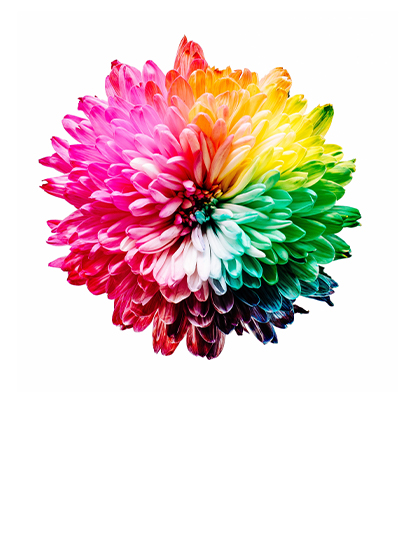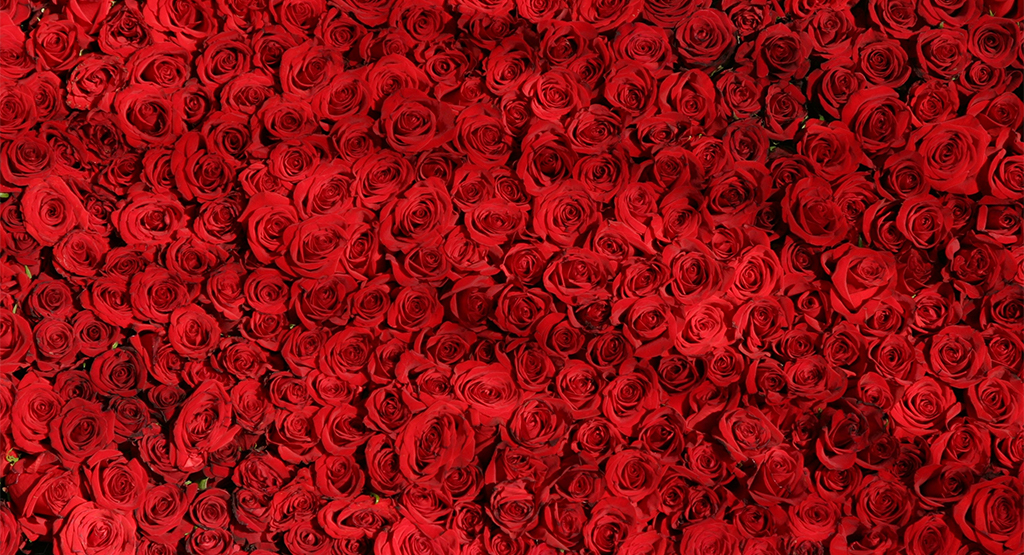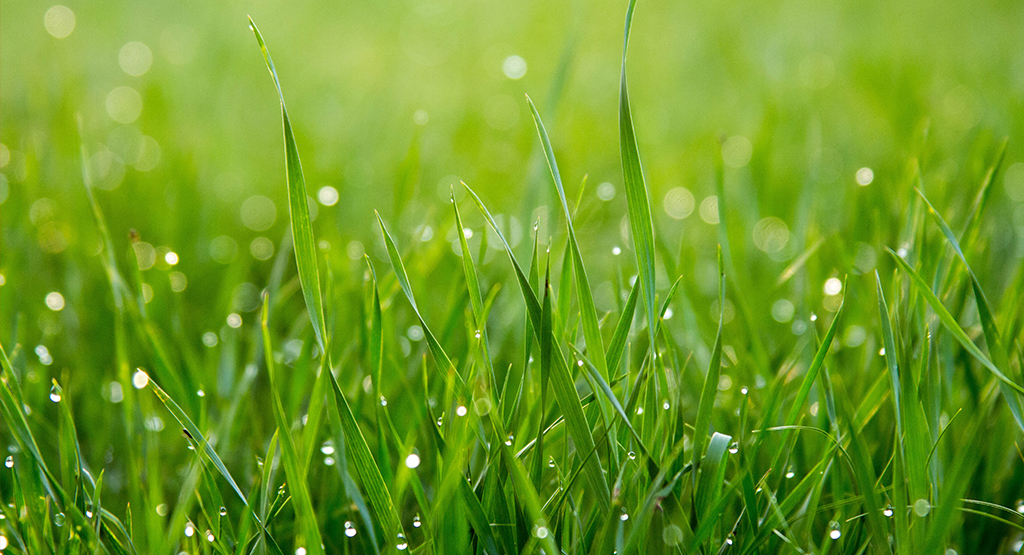The Power & Psychology of Colour in Branding
23rd Sep 2020

“Onions have layers, Ogres have layers. You get it? We both have layers!” – Shrek
Do you know what else has layers? Your brand identity. Many people mistake brand identity for brand image, often believing that your logo, type, and colour in branding is what your brand identity is. As much as this is a part of your brand, and is just as important as any other part when building a brand, it’s still just one of the layers of your whole identity. Each layer is made up of different parts: your mission, values, vision, and proposition are all part of your brand strategy. Which makes up your first and arguably the most important layer of your brand. That layer then becomes the core fundaments for the rest of your brand identity.
Once you know exactly what sits in that layer, you can make much clearer choices on the design aspects of your brand image such as; what sort of logo should you have, what typography should your brand use, what type of messaging should it say, or what type of colour should your brand use. If you want to find out more about what makes a proper brand identity, have a look at our other blog “Branding vs. Logo”.
In this blog post, we will touch upon the last point of the above-mentioned brand aspects. We will talk about colour, and be more precise about the colour theory. We will talk about what it is and what different colours represent, because just like we mentioned in our previous blog about “choosing the right typography”, each style of type subconsciously sends a different meaning across to the viewer, and the same principle applies to colours.
How brands use colour psychology to reinforce their identities
Colour psychology is the study of how colours affect our perceptions and behaviours. It aims to determine how colour affects our decisions. For example, the items we buy, the brands we pick, or the buttons we click.
In the creative world, the colour psychology topic has become a very hot one and is now a big part of not only brand design but also marketing. It is strongly believed that the correct use of colour in branding can greatly aid customers’ impressions and evoke emotions or feelings that create connection and help them remember the brand for longer.
Just to help you understand how effective using the right colour really is, you can have a look at a study called “Impact of Colour on Marketing”, where researchers found that colour can be used to increase or decrease appetite, enhance mood, calm customers down, and reduce the perception of waiting times amongst many other things.
Alongside this, another interesting finding was the fact that up to 90% of snap judgements made about products can be based on the colour of the packaging alone.
However, the truth about colour is that it’s too dependent on personal experiences for it to be universally assigned to specific feelings. Personal preferences, experiences, upbringings, cultural differences, gender and location among many other factors can make a difference in how an individual perceives colour. For example, if you show the colour red to two random people and ask them to associate it with something. One might say speed and fast cars, whereas the other may say blood and violence. Those are two completely opposite answers, but neither is wrong.
How does it work?
So most of the time, these colour connections are made in the back of our minds and we’re unaware of them unless we actually focus on them, but they still happen either way! Have you ever walked into a blue room and felt a sense of calmness wash over you? Or walked into a bright yellow painted room and instantly felt anxious and on edge?
That’s because your brain registered the change of colour of the room and reacted to it. In the blue room, your brain made a connection between the colour and the ocean, releasing the calm and relaxing feeling of the beach and soothing of the ocean. In the yellow room, the overload of the brightness and the eye-straining caused the colour to seem almost radioactive, making your brain unable to relax and creating the feeling of anxiety. In a situation like this, it’s much easier to feel the effect of the colour because of the sheer volume of it that surrounds you.
Ultimately, this principle transfers onto your designs where the amount of colour may not be as big as in the room, so the effect may not be as noticeable, but is still there to some extent. A simple example is if your design has some text in green then before even reading it the viewers might naturally think that this text is about something positive or something that can be done.
Alternatively, if the text was in red it would create the impression that it talks about something negative or something that should not be done. But again, the amount of colour on your design will change its impact, if you use colour as an accent then the effects of it might not be as noticeable, whereas if you use it across the whole design, like on the background, then the colour will have much more presence and have a bigger impact on the viewer.
Why is colour in branding important?
When creating your brand identity, you will eventually have to decide what colours your brand will use. Colour in branding is important because if chosen well, the colour can become a recognisable part of your brand. Hence why it’s important to have one main colour in branding which will be consistent throughout all collateral.
When picking a colour in branding you should not just be going with it because ‘it looks good’, consider your brand strategy, what are your brand values? Will the colour reflect them or will it blur their meaning, think about your brand direction as well, is there an area that your brand wants to go into, what is that area and what does it look like? Is there a particular colour that reflects the area well? Is there a colour within that area that is overused? Picking the right colour in branding, rather than a good looking one, will make your brand much more credible and genuine, and will help in creating the right brand opinion in your customers’ minds.
Colour Symbolism
So let’s finally have a look at the different colours and their symbolism. Please do remember that even though each colour has its meaning, they are not limited to it and can be used in other contexts if correctly justified.

Red
Red, the colour of fire and blood, is often associated with love, passion, desire, heat, health, radiance, lust, sexuality, sensitivity, romance, joy, strength, leadership, courage, willpower, rage, anger, danger, stress, action, vibrance, and determination.
Red is assertive, daring, powerful, energetic, enthusiastic, impulsive exciting, and aggressive.
The colour red is intense and packed with emotion ranging from intense, passionate love to violence and anger, representing both cupid and the devil through this. It’s a hot, strong & stimulating colour that represents energy and excitement.
It’s also a highly visible colour which allows to focus attention quickly and make quick decisions, which is one of the reasons why firetrucks are painted in that colour. Stop signs and stop lights use red to alert drivers of the upcoming dangers of intersections.

Yellow
Yellow is mainly associated with sunshine, happiness, hope and positivity, but it can sometimes have conflicting associations too. It can represent freshness, happiness, joy, positivity, clarity, optimism, enlightenment, remembrance, intellect, honour, loyalty and energy, but on the conflicting side, it can also represent cowardice and deceit. A dull or gloomy yellow may also represent caution, sickness and jealousy.
It is believed that the warmth and cheerfulness of the colour yellow increases mental activity and muscle energy. The colour helps activate the memory, encourages communication, enhances vision, builds confidence, and stimulates the nervous system.
A bright yellow is a bold and highly attention-grabbing colour, and when used in a combination with black it creates a highly effective and easy to read colour combination which can be seen from a long distance.

Orange
Orange is a blend of red and yellow. It carries a mixture of the energy associated with red and the happiness associated with yellow. It is often associated with joy, happiness, fun, enjoyment, enthusiasm, encouragement, determination, success, warmth, sunshine, health, stimulation, balance, sexuality, expression, fascination, freedom and creativity.
The colour orange is the colour of joy and creativity. It promotes a sense of general wellness and emotional energy such as compassion and warmth. It is also stimulating and vibrant, carrying a less aggressive quality than the colour red due to its combination with yellow.

Green
Green, the colour of nature, life and energy, is normally associated with environment, growth, freshness, fertility, harmony and safety. It is also associated with finances, money, banking, ambition, greed and jealousy.
Green is believed to have a healing power by being the most restful and relaxing colour for the human eye to view. Green can help enhance vision, stability and endurance. The colour can also alleviate anxiety, depression and nervousness.
Green Green is directly related to nature and energy, so it is very commonly used to represent ‘eco-friendly’ products. But with the association to growth and hope, green can be perceived as the need for growth and the lack of experience.

Blue
Blue is the colour of the sea and sky and therefore is generally associated with open spaces, depth, imagination, freedom, expansiveness, sensitivity and inspiration. But blue also represents trust, loyalty, stability, confidence, intelligence, wisdom, sincerity, faith and heaven.
It is believed that blue has positive effects on our minds and body. It evokes rest and can make the body produce calming chemicals. Blue also helps to slow human metabolism and lower appetite. It’s cooling in nature and helps with self-expression.
Blue communicates significance, importance and confidence, hence why it is used by police officers. Classed as a highly corporate colour it is also often associated with intelligence, unity and stability.

Purple
Purple, is a mix of blue and red, so it has the calm stability of blue and the fierce energy of red. It is also said to be a royal colour. Purple is associated with luxury, wealth, nobility, royalty, dignity, pride, mystery, independence, magic, creativity, grandeur and peace.
Purple has a variety of effects on the mind and body, such as uplifting spirits, creating feelings of spirituality, increasing sensitivity, encouraging imagination and creativity and calming the mind and nerves.
It’s a rare occurring colour in nature and therefore often seen as sacred and rare. It is also believed to be spiritual, associated with fulfilment, vitality, higher self, third eye and passion. But different shades and hues of purple have different meanings, light purple represents feminine energy and delicacy as well as romantic and nostalgic feelings.

Pink
Pink, classed as a cute and sweet colour, is associated with bubble gum, candy flowers, babies, charm, femininity, romance and playfulness. It’s the universal colour of love and represents friendship, affection, harmony, inner peace and approachability.
It’s the sweet side of the colour red, and both the colours can represent love. While red itself portrays the heat and passion of love, pink represents romance and charm. Hot pink is used to communicate playfulness, and light pink is used to communicate tenderness.

White
White, a positive colour, is associated with cleanliness, purity, virginity, innocence, brilliance, safety, understanding, beginnings, sterility, possibility, humility, sincerity, protection, light, faith, softness and perfection.
As the natural colour of snow, white can be used to represent coolness, cleanliness and simplicity. The colour white can also represent a successful beginning.
White is a bright and brilliant colour but can cause headaches and in situations with extremely bright light, it can even cause blinding.

Black
Black, the negative colour, is associated with power, strength, authority, fear, death, evil, aggression, rebellion, mystery, elegance, and sophistication.
Black is also classed as the colour of the unknown or the negative. It is formal, elegant, prestigious and professional. It’s also a naturally slimming colour and can make an area look much smaller when painted black.
With its authoritative and powerful meaning, it can evoke strong emotions and can even be overwhelming in large amounts.
Conclusion
Undoubtedly, colour has a big impact on not only our designs but our lives as well. We are surrounded by it 24/7 and our emotions and feelings can reflect that. Now, when it comes to picking the right colour for your next project, whether it is a colour in branding, a rebrand, marketing or anything else, this blog can guide you in making the right choice and help your designs with maximum effectiveness.
Each colour has its associations and if picked correctly it can really reinforce your brand and elevate its message. It’s important to remember what it is you’re designing and what you want it to tell to the viewer. If designing a brand, look at your brand strategy and brand positioning to remind yourself of what the brand stands for and what it should show. Picking a good colour which works can really make your brand timeless.
However, if you don’t think you can make the right choice in picking a colour in branding or simply want a bit of guidance then get in touch! We’re experts in Graphic Design and our team will be able to help you and guide you with designing your perfect brand.



